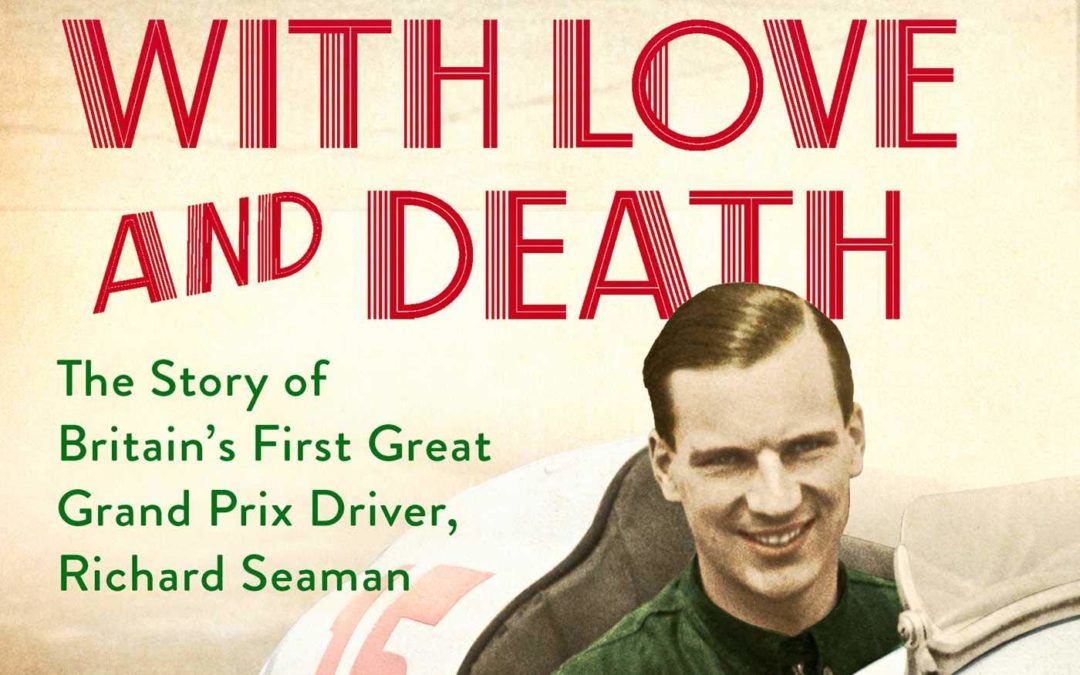
Dick Seaman was the archetypal dashing motorsport hero of the 1930s, the first Englishman to win a race for Mercedes-Benz and the last grand prix driver to die at the wheel before the outbreak of the Second World War.
Award-winning author Richard Williams reveals the remarkable but now forgotten story of a driver whose battles against the leading figures of motor racing’s golden age inspired the post-war generation of British champions. The son of wealthy parents, educated at Rugby and Cambridge, Seaman grew up in a privileged world of house parties, jazz and fast cars. But motor racing was no mere hobby: it became such an obsession that he dropped out of university to pursue his ambitions, squeezing money out of his parents to buy better cars. When he was offered a contract with the world-beating, state-sponsored Mercedes team in 1937, he signed up despite the growing political tensions between Britain and Germany. A year later he celebrated victory in the German Grand Prix with the beautiful 18-year-old daughter of the founder of BMW. Their wedding that summer would force a split with his family, a costly rift that had not been closed six months later when he crashed in the rain while leading at Spa, dying with his divided loyalties seemingly unresolved. He was just 26 years old.
A Race with Love and Death is a gripping tale of speed, romance and tragedy. Set in an era of rising tensions, where the urge to live each moment to the full never seemed more important, it is a richly evocative story that grips from first to last.
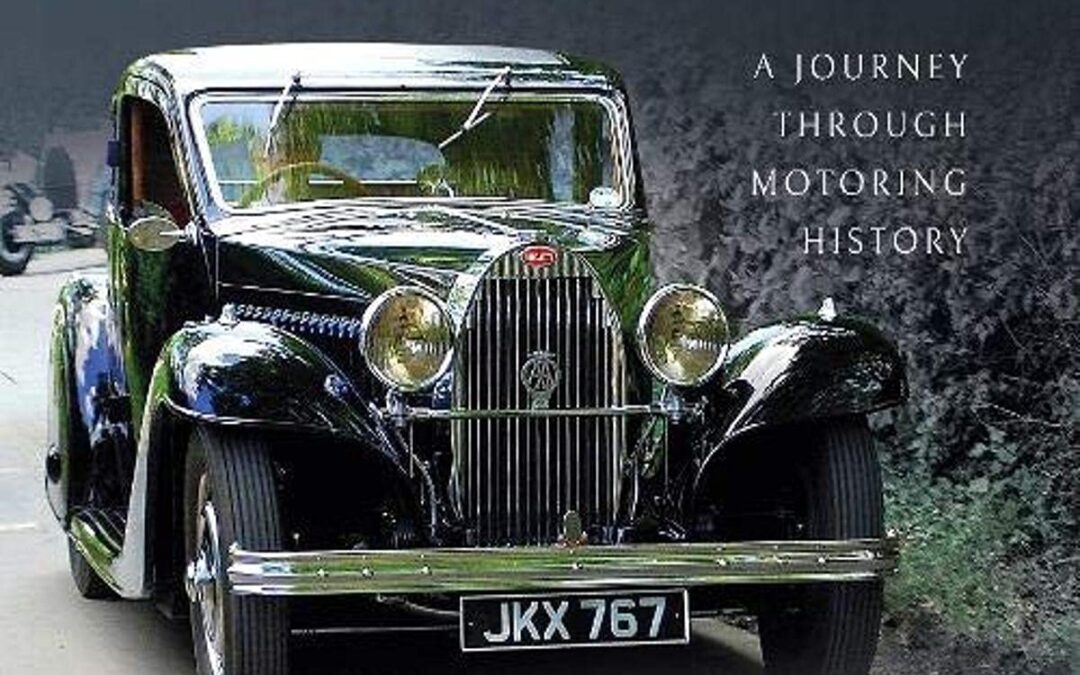
In a classic car photography book packed with an eclectic mix of automotive images, Lance Cole (author of the
Classic Car Adventure) presents a stunning collection of photographs of old cars of all marques and types captured in many locations. Across Allards to Bugattis, Citroëns DKWs, Porsches, Saabs, Triumphs, Voisins, VWs, and a potpourri of well-known classics, the author has journeyed far and wide to create a wonderful diary of classic car moments amid the great enthusiasm for nostalgia on wheels. A mix of cars, people, portraits, action and atmosphere all blend in to a colorful journey across the classic car world in a diverse blend of marques and eras.
250 color and black and white images populate an odyssey across a landscape of cars in an interesting format that pitches multimillion pound cars alongside more humble names. Seen on the move and static, Lance Cole’s photographs capture the essence of metal sculpture, light falling upon paint and form, and the design hallmarks of old cars prior to the age of digital design authoritarianism when so many cars look similar.
If you love old metal, patina, paint, leather, and enthusiasm, all captured across vintage, veteran, classic and modern classic metal, then Classic Car Gallery is a rare memento of the cars of yesteryear seen in the celebration of their today.

Toyota MR2 – The Complete Story tells of the trials and tribulations the team faced bring the MR2 to market, how global events almost conspired to force Toyota to cancel the project and how it survived against all odds to become one of the company’s best-loved cars. This new paperback edition for 2022 covers all three generations of models: the first-generation AW11 – Car of the Year Japan, 1984-1985; second-generation SW20, with a new 2,0 litre 3S-GTE engine, and the third-generation ZZW30/MR2 Roadster. The MR2 in motorsport and special editions and Zagato’s VM180 are also covered. With detailed specification guides, archive photos and beautiful new photography, this book is the definite dossier of a true Japanase classic and is a must for every MR2 owner and sports car enthusiast.
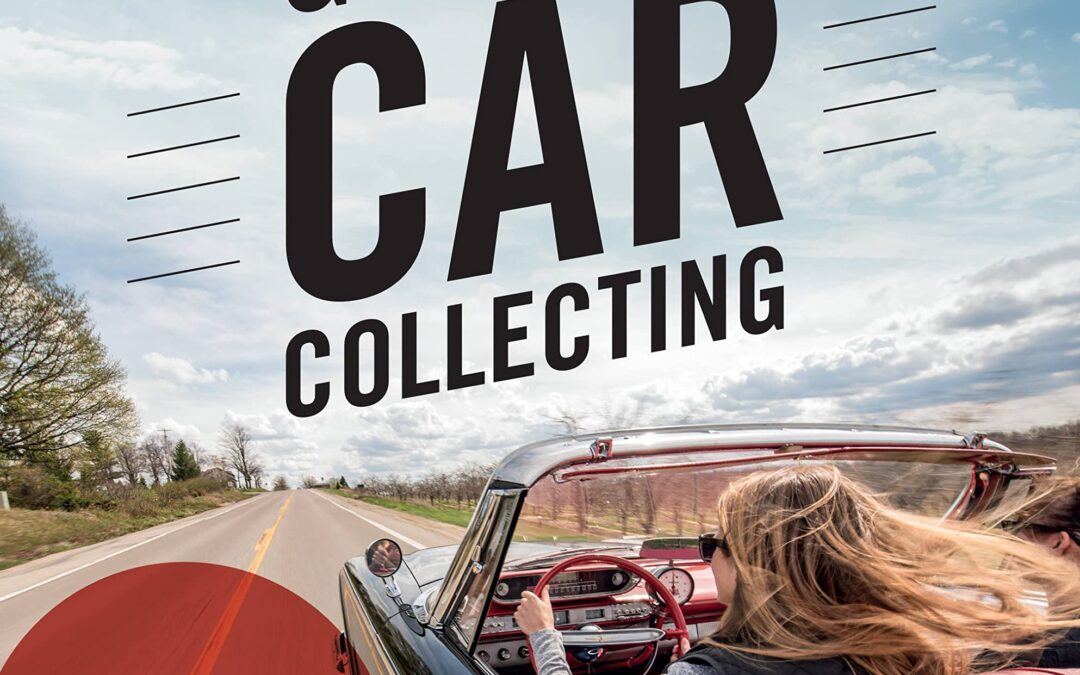
Satisfy your dream collector-car desires with this one-stop reference for starting or expanding your collection beyond traditional classics and muscle cars.
Focusing on the interests and needs of Generation X and Millennial car collectors, The NextGen Guide to Car Collecting offers a concise history of car collecting to present day, guidance on car buying and living the car-collector life, and an overview of collector cars with a focus on cars built from the 1970s through the 1990s while also touching on more contemporary cars. Chapters highlight Japanese, American, and European cars, particularly those models that have experienced the greatest growth in collector interest over the past decade.
The NextGen Guide to Car Collecting explores the many ways the Internet and social media have changed the classic car marketplace. You’ll learn how to buy a classic car online without suffering buyer’s remorse, as well as the four critical keys to a happy collector-vehicle relationship: 1) possessing discretionary cash for the initial purchase; 2) obtaining a thorough knowledge of the car and its ownership; 3) the critical pre-purchase inspection; and 4) access to a work space.
You’ll also find out why the popularity of late twentieth-century specialty cars will continue to grow (think increasing electronic complication and the still-large number of enthusiasts for whom “self-driving” means driving themselves) and explore the attributes that makes these cars desirable collector vehicles.
In addition, the book looks at the significant increases in quality and reliability of post-1970s machines and how that impacts their collectibility. Finally, learn why expectations that your newfound classic could outlast our current crop of lithium-ion-dependent electric cars may not be unrealistic: recent developments like ride-hailing and sharing services; expanded public transit; rental bikes and scooters; and garage condos and other storage options could actually extend the life of your “new” classic permitting you to truly tailor the use of your classics.
Whether your collection requires a one-stall garage or a pole barn, the practical, useful information and keen perspective of The NextGen Guide to Car Collecting will ensure you pull this volume from your shelf time and again.

- 50 years of BMW history in superb photos and gripping texts
- All the highlights of the company’s history, iconic BMW M models and Art Cars
- BMW owners and their treasures: stories from 50 years
- Lavishly designed illustrated book, officially supported by the BMW M GmbH
- Ideal gift for car lovers and BMW fans
In 1972 the story of BMW M GmbH started with an exclamation mark. Back then, the BMW 3.0 CSL already embodied all the virtues the Bavarian sports department still stands for today: consistent lightweight design, masterful performance and a striking appearance. With this principle the uncompromising saloons BMW M3 and M5 pioneered a whole type of car classification and the models of the M performance group brought a motorsport feeling to the road. On the 50th anniversary of the sports car icons, BMW M Love tells the whole story of the sporty BMW models – and is officially supported by the M GmbH. Apart from sporty saloons the M GmbH always knew how to catch public attention with spectacular racing successes, prototypes and activities. World-famous artists such as Andy Warhol, Roy Lichtenstein and Jeff Koons used Art Cars as their canvas. With numerous stories from 50 years this book presents the full history of the BMW sports cars with the telling ‘M’. Discover the greatest model icons anew, experience the most impressive sporting successes once more and join famous M owners in their love for cars!
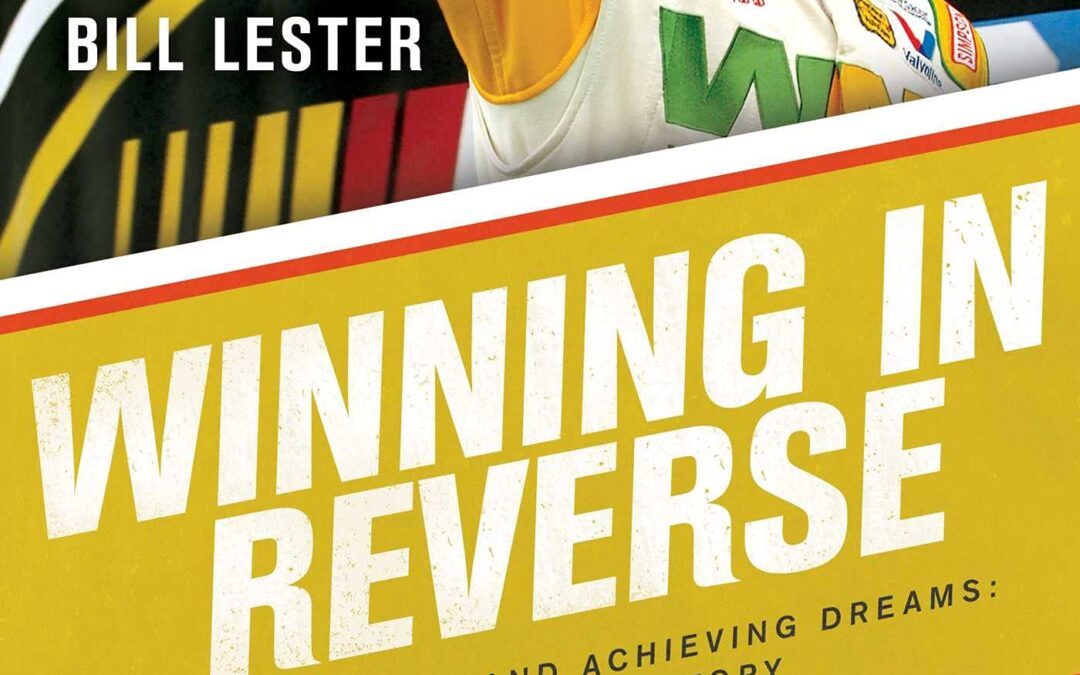
The amazing and dramatic story of Bill Lester, one of the most well-known NASCAR drivers in history—and a pioneer whose determination and spirit has paved the way for a new generation of racers.
Winning in Reverse tells the story of Bill Lester whose love for racing eventually compelled him to quit his job as an engineer to pursue racing full time. Blessed with natural talent, Bill still had a trifecta of odds against him: he was black, he was middle aged, and he wasn’t a southerner.
Bill Lester rose above it all, as did his rankings, and he made history time and time again, becoming the first African American to race in NASCAR’s Busch Series, the first to participate in the Nextel Cup and the first to win a Pole Position start in the NASCAR Craftsman Truck Series.
Whether you are contemplating a career or lifestyle change, challenging social norms, or struggling against prejudice or bigotry, Winning in Reverse is a story for sports fans and readers everywhere about the power of perseverance in the face of adversity.

This story is like something out of Hollywood.
In the mid-1960s BSA/Triumph learns that Honda is to launch a 750cc motorcycle that will clearly outclass its 650cc twins. Luckily, Meriden’s top two designers – Bert Hopwood and Doug Hele – have been toying with the idea of a 3-cylinder 750. Could it work? The prototype is fast and intoxicating to ride, but delays mean the Triumph Trident and BSA Rocket 3 have only been on the market a few weeks when the smoother Honda 750 comes along.
The British bikes might be fast, but they lack sophistication and no one loves their oddball styling. Sales are so slow that production is suspended for eight months. BSA/Triumph fights back with a factory race team that sweeps all before it in 1971, including a 1–2–3 at the Daytona 200. And while BSA collapses, Triumph struggles on, launching the factory custom Hurricane and updating the T150 Trident with a 5-speed gearbox and front disc brake.
The Meriden factory sit-in stops Trident production, but a few months later bikes are rolling off the line at Small Heath and the electric-start T160 is launched. To no avail – the odds are against them and in early 1975 Trident production finally stops.
But just as in Hollywood, that’s not the end of the story. Les Williams and Norman Hyde keep the Trident flag flying through the 1980s and beyond. The Trident and Rocket 3 Owners’ Club is formed, bringing together enthusiasts for the iconic triples. And in 1992 (and again in 2020) the reborn Triumph company launches 3-cylinder bikes that carry on the Trident name.
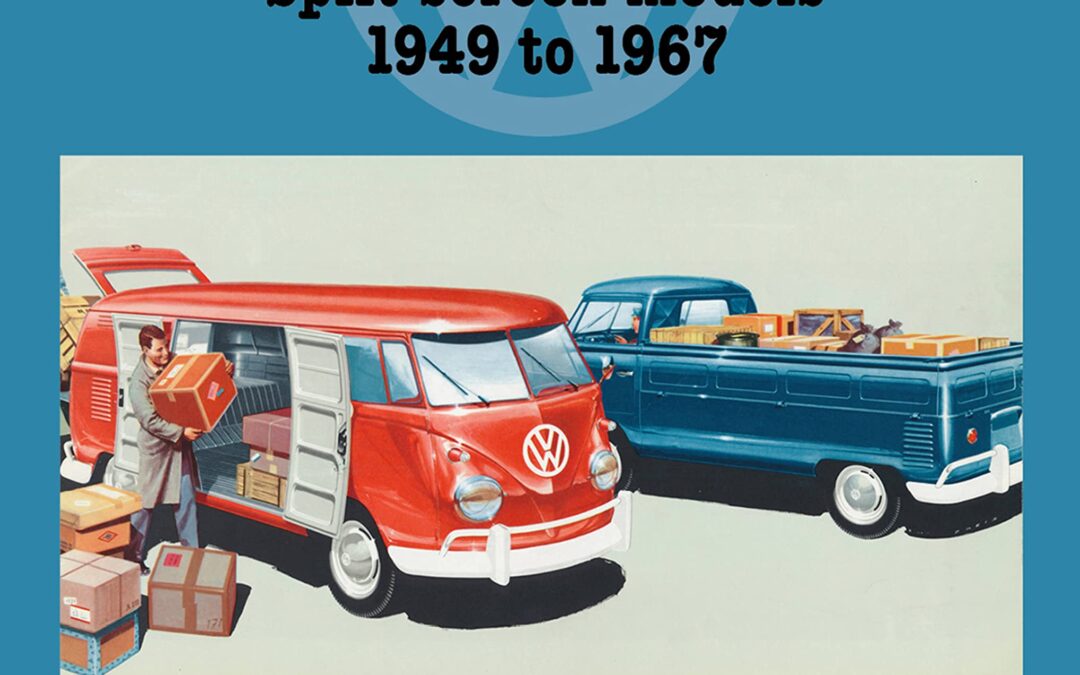
From a simple sketch of a box-shaped delivery vehicle to one of the most recognisable silhouettes in motoring, the first-generation VW Transporter formed the genesis of what was to become the best-selling van in history.
Unveiled in November 1949, the quirky VW Transporter would soon find demand for its services throughout the world, thanks to its cab-forward layout, ingenuity and adaptability. The initial Panel Van gave rise to a flexible Pick-up, revolutionary Kombi, adventurous camper and and an endless catalogue of inspired conversions and variations. There were ambulances, mobile shops, school buses, fire tenders, high-roofed vans, double-cab pick-ups, police vans, mobile milking machines, and so many more.
As Volkswagen survived Second World War turmoil and thrived under the firm focus of director general Heinz Nordhoff, this book charts the progress of the innovative Transporter as its initial weaknesses were improved and eventually perfected to exploit the Beetle-based rear-engined layout.
Much like the Beetle, the Transporter gained a cult following around the globe, with its attributes as a commercial vehicle equalled by its status as a hippie bus and stalwart of the surfing community. There was barely a nation on Earth where the Transporter hadn’t become engrained in its culture or everyday life.
VW replaced the German-built first Transporter with a second-generation machine in 1967, but manufacturing continued in Brazil until 1975 – where the rear-engined platform itself remained in production until 2013.
It’s no wonder, then, that the first-generation Transporter is so well-loved today, and why its incredible story can be told here in such beautifully-presented and expertly-researched detail. From the first drawings and prototypes of the late-1940s to the final split-screen Transporters of 1967 and South American derivatives of the 1970s, Volkswagen author Richard Copping guides us through an unmissable volume where each model, all variants and every option of the first-generation Transporter is lavishly accompanied by sumptuous period photography and stunning brochure illustrations.
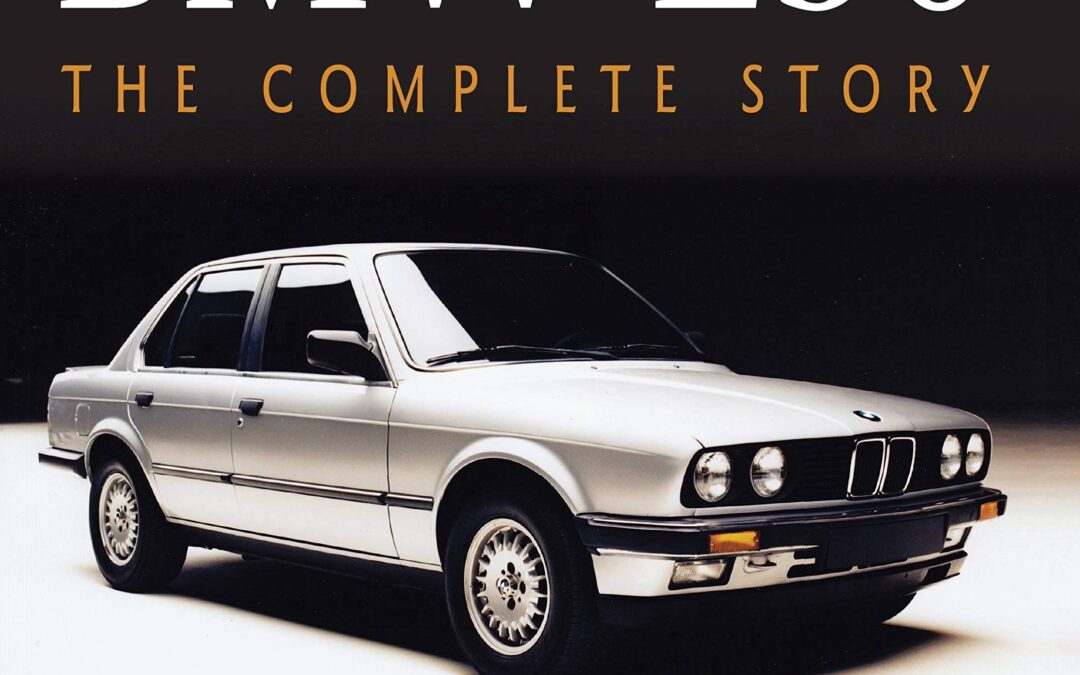
The E30 3 Series was the car that defined BMW more than any other during the 1980s, and it has gone on to become a much-loved modern classic.
This book tells the full story of the cars from the time in 1976 when work first began on the successor to the original E21 3 Series. This new book features the story of how and why BMW designed their new compact E30 saloon for the 1980s; the styling, engineering and specification changes introduced over the lifetime of the model.
There are full technical specifications, including paint and interior trim choices given along with a chapter on the special US variants. Details of the M3 and the cars produced by the leading German tuners and finally, there is a chapter on buying and owning a BMW E30.

Celebrating the rich, deep partnership between the British car industry and Italian design, this book is packed with coachbuilt cars, design classics and concept cars from the 1920s to the current day. The story starts with the early days of coachbuilt cars on separate chassis from illustrious marques like Bentley, Frazer Nash and Rolls-Royce, which were bodied by such Italian coachbuilders as Pinin Farina, Viotti and Zagato. After World War Two came the golden era of coachbuilt cars, with Italian companies creating some of the world’s most beautiful shapes of all time on chassis from the likes of Aston Martin, Austin-Healey, Bristol, Jaguar, Jowett, MG, Riley and Rover.
Then came the era when Italian carrozzerie morphed into design houses, penning shapes for mass-produced cars like the BMC 1100/1300 and Triumph Herald, and crafting what are widely recognised to be some of the world’s most beautiful cars, such as the Aston Martin DB4, AC 428 and Lotus Esprit.
Finally came the era of the ‘concept car’, with incredible show designs based on British marques such as Jaguars by Bertone, the BMC 1800 Berlina Aerodinamica by Pininfarina and Lotus by Italdesign.
This book reveals the full stories behind the intense, diverse, sometimes surprising and always fascinating links between British cars and Italian design: the characters, the deals, the designs and above all the cars themselves.
Over 40 British marques are included, from AC to Wolseley, and from major names like Jaguar down to smaller operations such as Jensen, TVR, Elva and Gordon-Keeble. These are matched by more than 40 Italian carrozzerie, from Allemano to Zagato. As well as major collaborations – such as Pininfarina and BMC, Michelotti and Triumph, Touring and Aston Martin – myriad never-before-told stories of small operators really make this book special: the likes of Frua, Boano, Fissore, Monviso, Sibona-Basano and Schiaretti.
Richly illustrated with hundreds of period images, high-quality modern photography and dozens of sketches by the designers themselves – many never seen in print before – this is a book to relish for both lovers of design and enthusiasts of British and Italian cars.

‘A special treat…The pictures and stories combine to provide a rich texture to telling the difficult story of why we chase speed like an addiction.’ Valerie Thompson, the world’s fastest female motorcycle racer
Ever since we built machines that could transport us, there has been a desire to find ways to make them go faster. For some, going faster isn’t enough – they want to be the fastest. This book celebrates those who have built the machines and driven them at ever greater speeds. This is The History of Speed.
Bestselling automotive writer Martin Roach tells the extraordinary story of those who have come to be obsessed by speed. From Camille Jenatzy, ‘the Red Devil’, who became the first man to drive at over 100kmh in 1899, through the golden age of Malcolm Campbell and his Bluebird, and on to the modern era of jet- and rocket-propelled cars, we have gone faster and faster. But this book is not just about these record-breakers, Roach also looks at the technology, the engines and the inventors who helped progress in speed at all levels, from Formula One to the supercars from the likes of Ferrari and Mercedes that are eagerly snapped up by collectors, rarely to be seen on the road.
Accompanied by some of the most stunning images of the cars and those who made and drove them, Roach tells a wonderful story of innovation and invention. He talks to some of the great drivers to find out what inspires them to risk their lives, and finds out from engineers how they developed their ideas. Along the way, we hear some remarkable tales and anecdotes, but also find out how the pursuit of speed can also have its costs, with many tragic heroes and heroines falling along the way.
If you’ve ever thrilled to the roar of a sports car engine, or loved the feel of the g-force as you accelerate away, or even looked on in wonder at a powerful engine, The History of Speed is a book that you will not want to miss out on.
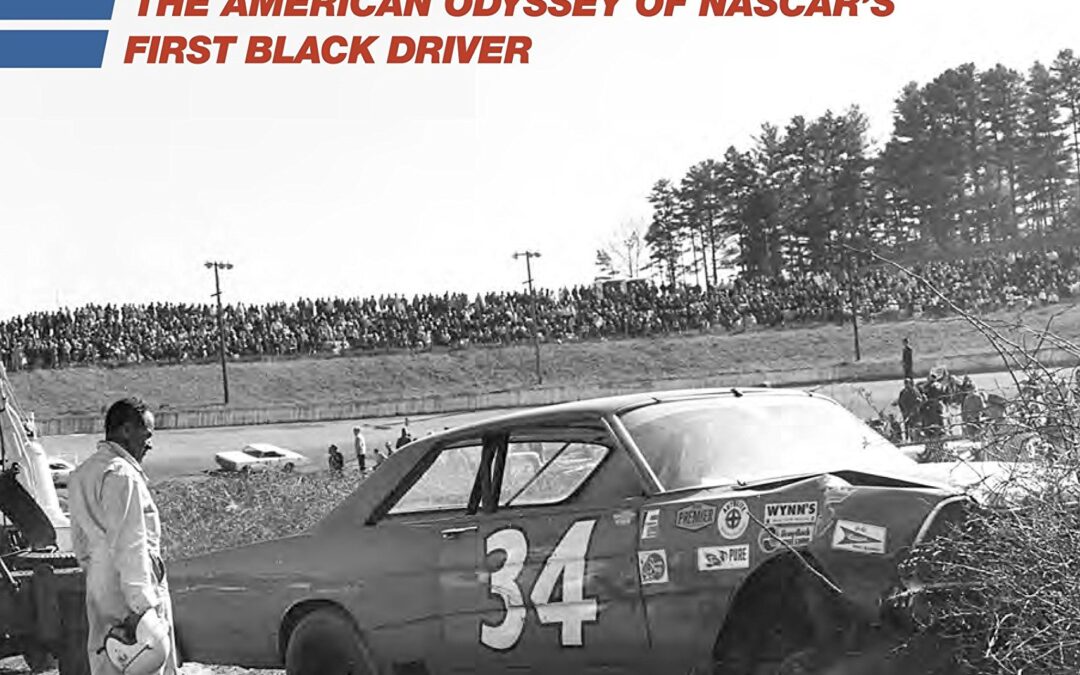
The American Odyssey of NASCAR’s First Black Driver
Hard Driving is the dramatic story of one man’s dogged determination to live the life he loved, and to compete, despite daunting obstacles, at the highest level of his sport.
Wendell Scott figured he was signing up for trouble when he became NASCAR’s version of Jackie Robinson in the segregated 1950s. Some speedways refused to let him race. “Go home, nigger,” spectators yelled. And after a bigoted promoter refused to pay him, Scott appealed directly to the sport’s founder, nascar czar Bill France Sr. France made a promise Scott would never forget – that NASCAR would never treat him with prejudice.
For the next two decades, Scott chased a dream whose fulfillment depended on France backing up that promise. Persevering through crashes, health problems, and money troubles, Scott remained convinced he had the talent to become one of NASCAR’s best.
Hard Driving documents a previously untold chapter in the history of integration, politics, and sports in America. It reveals how France, founder of the multibillion-dollar nascar empire, reneged on his pledge and allowed repeated discrimination against Scott by racing officials and other powerful figures. It details France’s alliances with leading segregationist politicians such as George Wallace, the reluctance of auto executives such as Lee Iacocca to sponsor a black driver; and the inspiring support Scott received from white drivers such as nascar champions Ned Jarrett and Richard Petty, who admired his skill and tenacity.
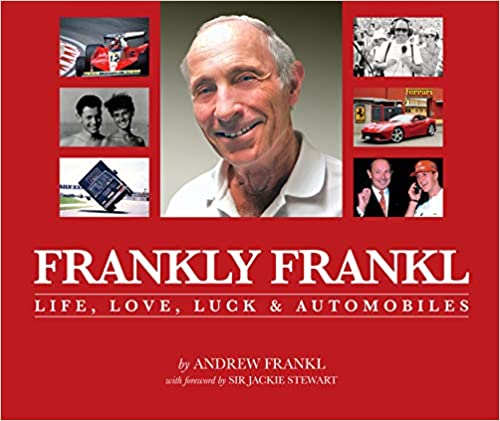
SIGNED
Nazis, Communists, Formula 1, Ferraris, the Cannonball Run, the Olympics, even a true love lost then found nearly 40 years later—Andrew Frankl’s memoir reads like a work of fantasy. But it’s all true. Inside this full-color 208-page hardcover book, complete with dust jacket, you’ll find Frankl’s reflections on his 80 years of life, love luck and automobiles.Each copy will be individually hand-signed by the author, making this a collectible book that can be treasured for years to come by anyone in the motorsports industry.
—Learn how Frankl’s story started in late 1956, when, at just 18 years of age, he was issued an AK47 and ordered to shoot the Russians
—Find out about his early career in motorsports when he left automaker Ford to join the annual publication Autocourse, and within a few years moved on to CAR.
—After selling CAR to Rupert Murdoch in the late 1980s for a tidy sum, Frankl set his sights on the Olympic Games, organizing and running a bobsled team in 1994, 1998, and 2002.
—But he couldn’t stay away from publishing. In 1996, he joined the staff of the internationally-known Ferrari magazine, FORZA, where he has served as Grand Prix Editor every since.
—Right around that time, he was reunited with his first love, Suzie, from whom he had been separated by the ’56 Revolution.

GIs returning after World War II created an entirely new automotive market niche when they bought surplus Jeeps and began exploring the rugged backcountry of the American West. This burgeoning market segment, which eventually became known as sport utility vehicles (SUVs), numbered about 40,000 units per year with offerings from Jeep, Scout, Toyota, and Land Rover. In 1966, Ford entered the fray with its Bronco, offering increased refinement, more power, and an innovative coil-spring front suspension. The Bronco caught on quickly and soon established a reputation as a solid backcountry performer. In Baja, the legendary accomplishments of racers such as Parnelli Jones, Rod Hall, and Bill Stroppe further cemented the bobtail’s reputation for toughness.
Ford moved upstream with the introduction of the larger Bronco for 1978, witnessing a huge increase in sales for the second-generation trucks. The Twin Traction Beam front end was introduced in the third generation, and further refinements including more aerodynamic styling, greater luxury, and more powerful fuel-injected engines came on board in the generations that followed. Through it all, the Bronco retained its reputation as a tough, versatile, and comfortable rig, both on and off the paved road. With the reintroduction of the Bronco for 2020, Ford is producing a vehicle for a whole new generation of enthusiasts that looks to bring modern styling and performance to the market while building on the 30-year heritage of the first five generations of the Bronco so dearly loved by their owners.
From the development process and details of the first trucks through the 1996 models, author Todd Zuercher shares technical details, rarely seen photos, and highlights of significant models along with the stories of those people whose lives have been intertwined with the Bronco for many years. This book will have new information for everyone and will be a must-have for longtime enthusiasts and new owners alike!

Gian Paolo Dallara’s story is a story of passion in which the vicissitudes of life interweave with those of a company which, having started life in a small garage, has become a benchmark for technological achievement in motor racing. Both man and company are inextricably linked with the little town of Varano de’ Melegari which nestles in the foothills of the Apennines 20 kilometres from Parma. Dallara and his cars have even conquered Indianapolis, the home of American motor sport and headquarters of Dallara USA. From Varano to the world: an incredible story. A beautiful story. Told by Guido Schittone, a television journalist with a love of the printed word, with the contribution of Pino Allievi, Eddie Cheever, Cesare Fiorio and testimonies of Mario Andretti, Paolo Barilla, Aldo Costa, Piero Ferrari, Dario Franchitti, Emanuele Pirro, Lorenzo Ramaciotti, Jean Todt, Frank Williams.
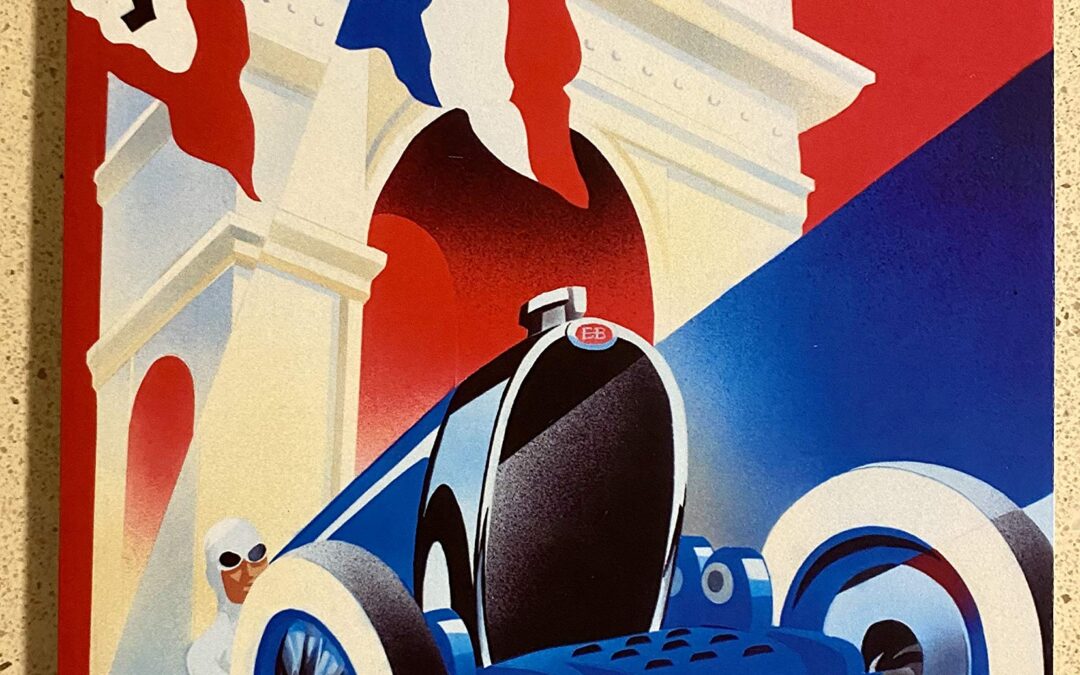
We are true to history: A Bugatti race car driver became a hero of the French Resistance. When German occupiers – in 1942 – seize his factory to build weapons, Ettore Bugatti, a lofty artisan/engineer, wants only to preserve his empire to again make the most beautiful cars the world has ever seen. Driver Alexander Graves, racer and patriot, is thrown into conflict with his revered “Patron.” Can Alexander destroy explosive torpedoes bound for U-Boat ports to sink Allied ships without leveling the factory? Can he save Claire, who no man says ‘no’ to, from her reckless plan to help liberate a stricken nation? With a mechanics ingenuity and with matchless skill behind a Bugatti’s wood-rimmed steering wheel, Alexander starts the race of his life.

This revised and expanded third edition of VW Camper – The Inside Story updates the story across six generations of the VW Bus and includes additional information and pictures, including more conversions, as well new information about the very early years and the latest models.
Using archive and period brochure images, and photographs of original-condition models still surviving to illustrate the detailed text, it documents the various specifications, layouts, fitments and optional equipment of over forty different conversion companies, from well-known names like Devon and Westfalia, to lesser-known or unusual models such as Slumberwagen and Arcomobil. Since publication of the first edition in 2005, followed by a revised, expanded edition in 2012, VW Camper – The Inside Story has been acclaimed by enthusiasts and lovers of the VW Camper, and has become a definitive guide to the many different camping conversions built on the VW Transporter and Microbus.
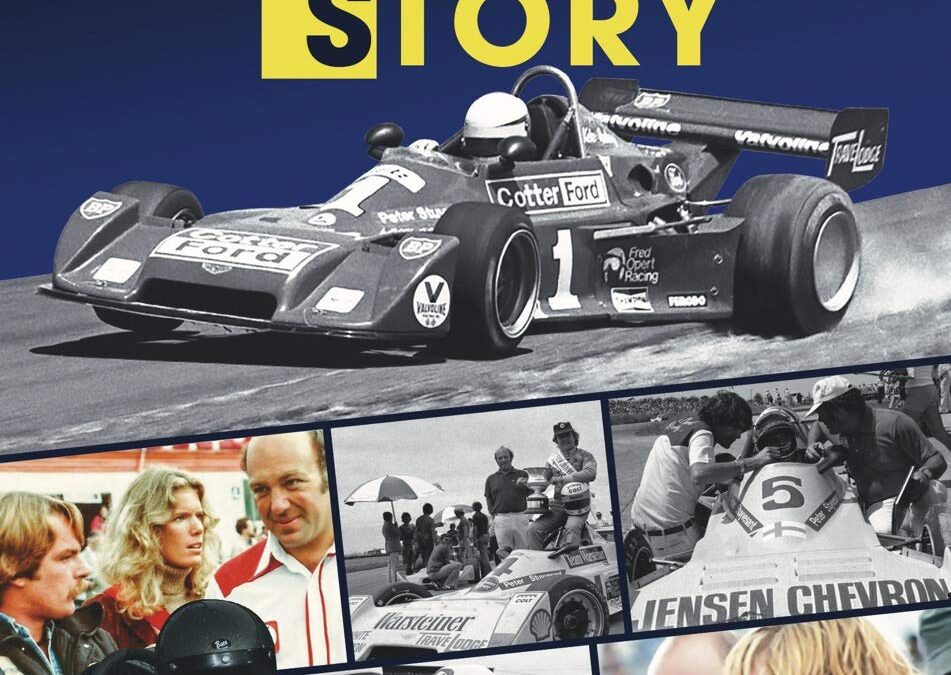
The engaging story of Fred Opert, whose brief time in a New York jail led him into a roller-coaster life of automobiles and motorsport.
Opert’s journey took him from a brief stint in a New York jail, to a successful career as race-car importer/dealer, race team owner and F1 team manager, before tragedy caused him to walk away from the sport he loved. This fascinating biography follows Fred Opert’s whirlwind lifestyle, talent-spotting successes, and the trials and tribulations of managing the ATS F1 team. Detailing the drivers who came up through the ranks with Opert, the book features interviews with many of those who worked with him. It has been written with the co-operation of Opert’s family, friends and ex-employees.
Forewords by Nico Rosberg, Alan Jones MBE and Keke Rosberg.
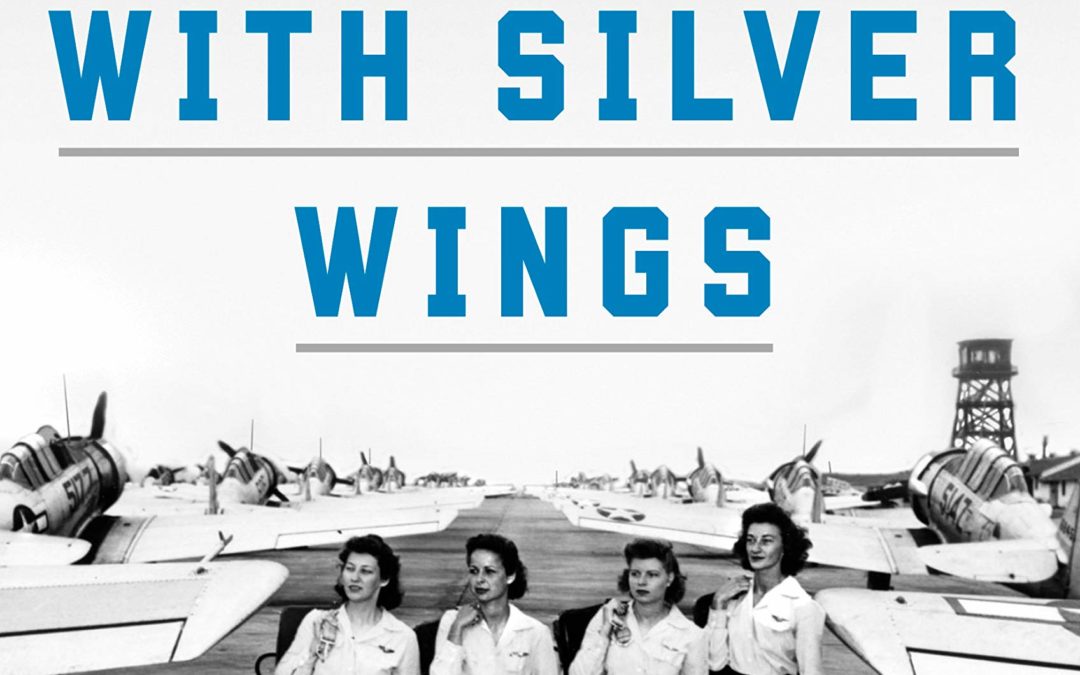
“With the fate of the free world hanging in the balance, women pilots went aloft to serve their nation. . . . A soaring tale in which, at long last, these daring World War II pilots gain the credit they deserve.”—Liza Mundy, New York Times bestselling author of Code Girls
When the Japanese attacked Pearl Harbor in December 1941, Cornelia Fort was already in the air. At twenty-two, Fort had escaped Nashville’s debutante scene for a fresh start as a flight instructor in Hawaii. She and her student were in the middle of their lesson when the bombs began to fall, and they barely made it back to ground that morning. Still, when the U.S. Army Air Forces put out a call for women pilots to aid the war effort, Fort was one of the first to respond. She became one of just over 1,100 women from across the nation to make it through the Army’s rigorous selection process and earn her silver wings.
The brainchild of trailblazing pilots Nancy Love and Jacqueline Cochran, the Women Airforce Service Pilots (WASP) gave women like Fort a chance to serve their country—and to prove that women aviators were just as skilled as men. While not authorized to serve in combat, the WASP helped train male pilots for service abroad, and ferried bombers and pursuits across the country. Thirty-eight WASP would not survive the war. But even taking into account these tragic losses, Love and Cochran’s social experiment seemed to be a resounding success—until, with the tides of war turning, Congress clipped the women’s wings. The program was disbanded, the women sent home. But the bonds they’d forged never failed, and over the next few decades they came together to fight for recognition as the military veterans they were—and for their place in history.

Introduced in 1968, the BMW 2002 is one of the best-loved automobiles of all time, but its origins have been shrouded in mystery and misinformation for the last 50 years. The BMW 2002: The real story behind the legend reveals the truth behind this seminal car’s creation. It dispels the myth that the car was built at importer Max Hoffman’s instigation, telling the real story of the designers, engineers, executives, and federal regulators who shaped the 2002 into the perfect mixture of performance and practicality. The BMW 2002: The real story behind the legend begins in 1960, with BMW’s first design drawings for a successor to the 700 coupe, and covers every engine and body-style variant through the final cars of 1976. No mere catalog of specifications, the book delves deeply into the process by which the cars were created: the decisions that were made, and the rationales behind them. The BMW 2002: The real story behind the legend also tells the story of BMW’s business operations in the US during that crucial period, from the days of independent importers Hoffman Motors Corp. and Fadex through the creation of BMW of North America, the Munich corporation’s wholly-owned sales subsidiary. As BMW’s first real hit in the US market, the 2002 put BMW on the path to becoming a global success story, and one of the world’s most respected car companies. This is the story of how that happened…and how it almost didn’t. 132 pages, with 110 black-and-white illustrations.






















